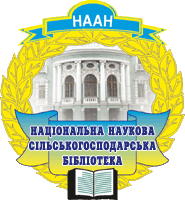 |
Electronic scientific professional edition |
| All numbers / 2019 No.2 / Article No.17 | ||||||
| 17 | Profesor M.V. Vynokurov (1890-1955) on creation of comfortable passenger wagons | full article | ||||
|
https://doi.org/
|
Pages: | 55-57 |  |
 |
||
| Summary | ||||||
|
The article highlights the contribution of professor M.V. Vinokurov for the modernization of passenger wagoncariages. He actively led research into the invention of the best type of trolley wagon, reducing noise and vibration from the chassis of the wagon to meet the needs of comfortable passenger transportation. The basic requirements for passenger wagons M.V. Vinokurov considered the following: traffic safety, smoothness, minimum weight of the wagon, maximum comfort for passengers, minimal expenses for manufacturing, operation, maintenance and repair. Special scientific activity M.V. Vinokurov we celebrate when he worked as the head of the «Wagonriages» department of the Dnepropetrovsk Institute of Railway Engineers (DIIT) (1934–1939), was a member of the City Council in Dnipropetrovsk (1934–1939). Therefore, he proposed his vision of how to achieve the task: to ensure the safety of the movement, to improve the existing designs of trolleys and running gear, which fully ensured the stability of the rolling stock when driving on the track in the range of permissible speeds. M.V. Vinokurov constantly turned to foreign experience and compared his results with research in the countries of Western Europe and the United States. In addition to reducing the packaging, Professor M.V. Vinokurov pointed out the need to reduce the resistance in new wagons, especially for high speeds. On the railways of the former USSR in connection with the creation of a streamlined body, reducing the distance between wagons and removing the protruding parts, as well as the depths of windows and doors, reduced air resistance, compared with the usual form of the body of the wagon, 26% at a speed of 140 km/h and 23.6% at a speed of 120 km/h. The main reasons for the mass transition to the all-metal structure were: the strength of a metal wagon, weight reduction, increased safety, increased shelf life, reduced maintenance, considerable savings in operating costs and the lack of wood required for the construction of wooden bodies. The next condition for passenger wagons, according to M.V. Vinokurov was a guarantee of smoothness of motion. Professor M.V. Vinokurov believed that the basic condition for the creation of smoothness of motion was the statement of spring hanging with a rigidity, directly proportional to the load, which was allocated to each set of springs. A significant amount of vertical accelerations measured in the middle of the wagon was created not only by the fluctuations of the spring suspension, but also the vibration of the body due to the lack of spurge clamps and the influence of the eccentricity of the wheel pairs. |
||||||
| Keywords | ||||||
| Vinokurov, passenger, smoothness, springs, vibration of a wagon, trolley wagons | ||||||
| References | ||||||
|
||||||
Title page of Edition
© National Scientific Agricultural Library NAAS, 2019